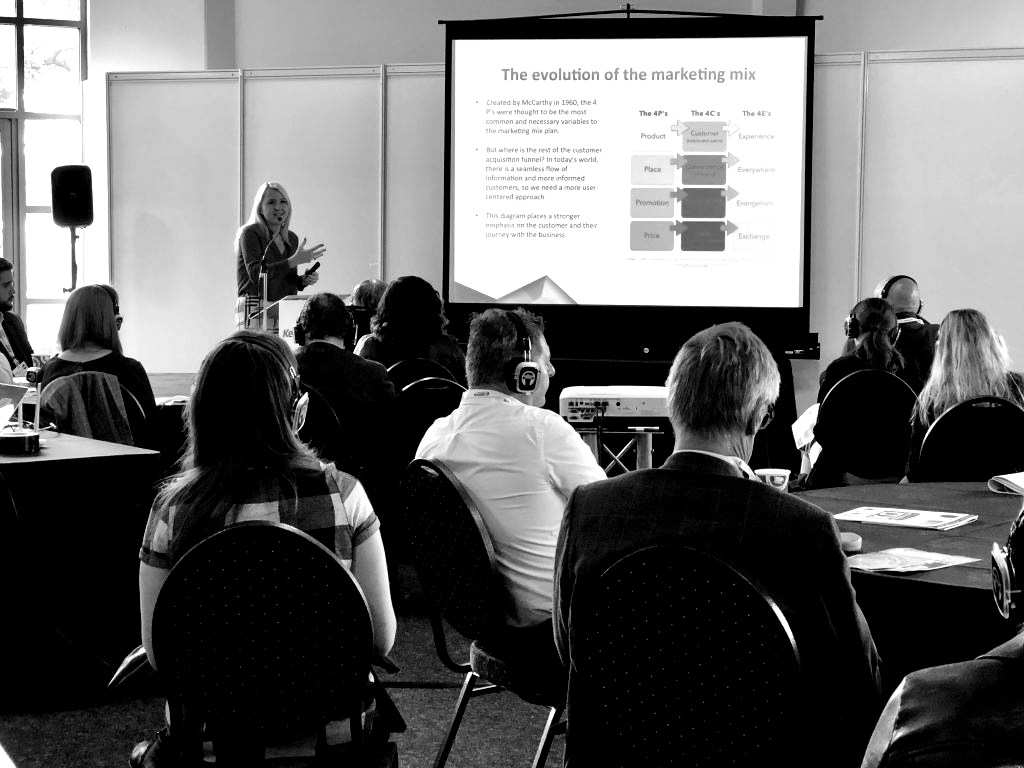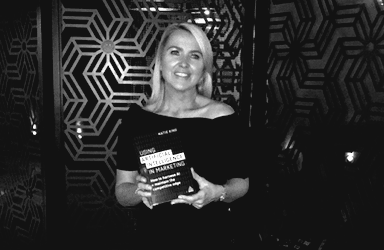The World of Social Selling: ‘Know, Like & Trust’
It’s 14 years since years since LinkedIn launched. It took a while to get going, with as few as 20 new sign-ups some days.
At last count, there were 500 million users.
Imagine being able to harness anything like that kind of growing power, that kind of reach, that kind of popularity.
This is the power of social selling in a digitally connected world.
LinkedIn is selling a service, just like any other. The creators were digital masters. They grasped the significance of developments in the digital world and anticipated how they would revolutionise the way we network, the way we do business, the way we buy, the way we sell.
In this digital age, the traditional salesman is dying. Cold sales, hard sales are a thing of the past. Nobody wants to listen to a scripted phone pitch or give up time to listen to a sales script. Fewer deals are done on the golf course or at a gentleman’s club.
The great majority start with an online search. The traditional sales funnel, with which I’m sure you’ll all be painfully familiar, has been turned on its head.
Do you know, that was first drawn in 1924? How could it possibly be relevant today? Look at how much change has gone on in the world since then.
In the past decade, change has accelerated at dizzying proportions. We are in a constant state of disruption. Just when we think we’re getting to grips with the new, it’s already old.
The most significant change in our world is that digital connectivity has put power in the hands of the customer. Instead of being passively influenced by marketing and sales, they actively search, research and compare.
Let’s have a look at how business was done, very much based on that old funnel.
Your marketing team created awareness around your product. This might have been through paid for advertising, press releases, sponsorship, trade fairs.
Messaging remained pretty fixed: This is what we offer this is why we think you should like it. Marketing and branding aimed to influence opinion, pique the interest of the market. It was pretty scattergun. You pay for an ad in a local paper or trade magazine, you hope that x per cent of the readers are interested enough to want to know more, go to your shop or showroom, call one of your sales assistants.
It was a one-way street of communication.
Meanwhile your sales team, working separately, might have been knocking on doors, hitting the phones or following up leads to arouse interest.
There was little, if any, communication between the teams, apart from the bottom line. If sales were heading in the right direction, the messaging must be working.
B2B sales execs had the added challenge of finding and making contact with the relevant decision-makers, before they could work on convincing them of need and that their product was the most relevant and suitable to fulfil it.
While the buyer was in consideration mode, the seller was trying to squash them further into the funnel, closing them down by any means necessary…
…until finally, kerching! A buyer was caught on the hook, the deal done, money changed hands. And back to the beginning again.
How can that process possibly work in a world where:
1: 75% of purchases now start with an online search by the buyer.
2: Prospects can compare your product or service to everything like it and buy from the competition without you even knowing they exist.
3: If you can get past the smiling sales assassin on the prospect company’s switchboard, the prospect will act as though a dangerous alarm has gone off if their office landline rings and look aghast until it diverts to voicemail. It’s barely worth leaving a message but if you do, you know the chances of anyone getting back to you are less than England’s hopes of winning the Euros. Same goes for email. How many carefully penned sales missives sent cold vanish into the ether?
Things have changed immeasurably. Which is why you need to change the way you work.
You need prospects to find you and to like you. Then they might just buy from you.
Social media is no longer the exclusive domain of marketers. It’s not about pushing messaging. It’s about conversations. It’s about connecting and engaging.
It needs to be integrated into the very DNA of your business.
It all starts at the top. If your C-level executives are suspicious about social media – if they only see risk – and potential PR disasters from gung-ho staff and damaging customer complaints going viral – they’ll draw down the shutters and, in the process, cut off all that opportunity.
If, on the other hand, they are social media savvy, they’ll be prepared to invest in training to optimise its potential and reduce risk, to reconfigure operations so that departments work together digitally, not in silos.
They will know they can’t afford not to socialise their businesses.
This positive approach will be fed down to human resources, who will recruit the most socially-adapt staff via platforms like LinkedIn and train up existing staff.
A sales team trained in social media will be listening to the market digitally.
It’s the nearest you can get to being a fly on the wall in the office of your prospects. Where do they hang out, digitally? What language do they use? How active are they? What external content do they share? (Make it yours.) There is a glittering treasure trove of information out there if you know how to mine for it.
Tools such as LinkedIn’s sales navigator can help pinpoint the individuals you need to be connecting with and identify sales prospects you never knew existed. If you’re going to invest in it, I can’t stress enough the value of making sure your staff are properly trained in how to use it properly. The ROI on this can be immense when used effectively.
Once you find them, it may sound creepy, but you can find out more about prospects online than on any golf course. It’s astonishing how much personal and business information people are willing to share.
The more active and open your prospects are on social media, the more receptive they are likely to be to engaging with you and your business via their digital hangouts.
This is still not the time, however, to go for a hard sell. All your work will be undone if you go for the jugular now.
This is where the integration comes in. All your departments need to be working towards the same goal so that wherever your prospect looks for information, they find you and they like you.
Sales need to be feeding back to marketing so they can tailor their content to speak directly to your prospects.
Marketers among you will know how valuable this kind of information is. It’s gold dust. Nobody wants to write for an unknown market and imagine the fruits of their labour falling to the ground to rot, unappreciated.
A well-trained marketer will create compelling content across a variety of media and platforms and understand the importance of engaging their market by curating external information relevant to that market. Audiences should barely even notice they are being sold to, but see your social media output as interesting and valuable. Be innovative in the way you engage your market.
Don’t tell people what to think. Ask them what they think. Start conversations, invite responses, reward them, even, whether with more free content or special offers. Make them want to share your blogs and posts.
Again, it’s all about making them find you – be easily discoverable – make them like you, make them want to buy from you or buy into you. Make it feel like it’s their choice.
This will make the job of your sales team so much easier.
A well-trained marketer will be competent at using analytics – or employ someone who is – to understand in great detail whether their work has been hitting the target; who it is reaching, when and how often and what the audience has done with it. They can find out when their target demographics are most likely to active on any platform.
Are they more likely to engage with infographics? Video or text-based messaging?
All this analysis can be fed back into marketing strategies to ensure maximum engagement and conversion, whether that conversion is clicking on to a website page, sales or simply sharing content to push awareness. They can also monitor what the competition is doing and how effective their strategies are.
In order to be as discoverable as possible, they will either be trained in search engine optimisation (SEO), to make sure their website jumps to the top of any Google search, or they’ll know someone who can do it for them.
The other side of the double-edged sword of social media is, of course, the destructive power of public criticism. A restaurant could serve food fit for the Gods 364 days a year. But the one day it all goes wrong, the fish is undercooked, a waiter has just been dumped and messes up every order, the oven goes on the blink, customers will be lining up to share every disastrous detail on the very public forum of social media and probably review sites.
Potential customers will go to Tripadvisor and look for the worst reviews, not the best ones.
What do you do? Rage at your powerless, sob into a serviette and prepare for bankruptcy?
This is where socially-trained customer services are worth their weight in gold. No matter what you’re selling, you can’t underestimate the value of engaging with your critics online, apologising, explaining, appeasing and offering suitable recompense. Most punters will give you the benefit of the doubt if they can see it was a genuine blip and you care enough to want to put it right.
In many circumstances, you can even turn disaster to a marketing opportunity, seizing the chance to tell the online community what you normally do so brilliantly.
If it’s really bad, customer services might work with marketing and sales to limit the damage, both online and through personal communication with any sales leads or contacts.
This is all part of the social selling process. Wherever a prospect looks for you, they’ll find something they like.
Whether you end up going to them, or they come to you, the job is half done before any contact is made.
Whether you’re successful on this occasion or not, there’s a relationship there based on the prospect liking you and what you stand for. Social media no offers the chance to maintain and build on that relationship as long as you are putting out content that they find valuable.
If you have made a sale, the next step is to maximise the chances of repeat business by fostering that relationship AND turn the customer into an evangelist. Make them promote your business for you via social media.
Ask if they wouldn’t mind tweeting that they’ve just bought your product or service, review it on a trade-specific website or act as a case study, to your mutual benefit.
Before social media, the scope of such business evangelism was limited to word of mouth or possible case studies on your website.
Now your happy customers can tell the world via social media.
To summarise, here’s an infographic I have put together to explain the customer journey in a digital age – and how you can make sure you’re on it with them.









